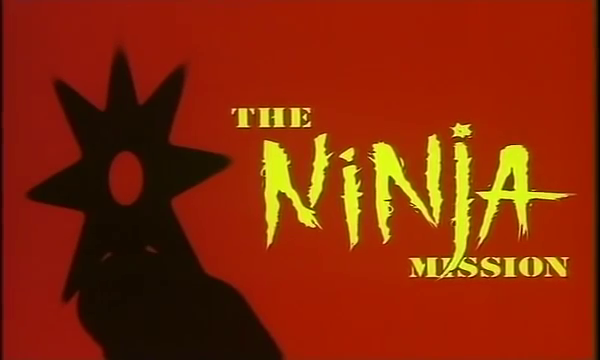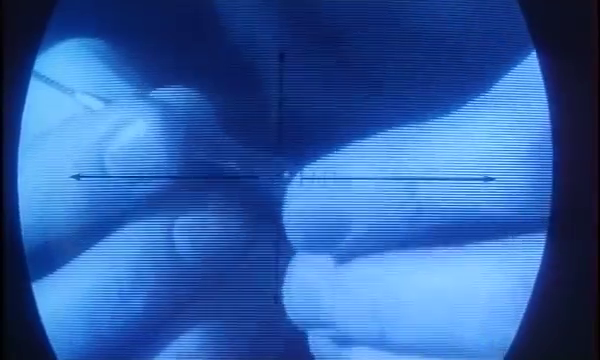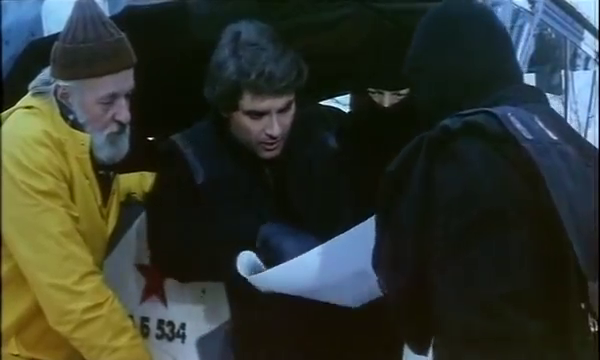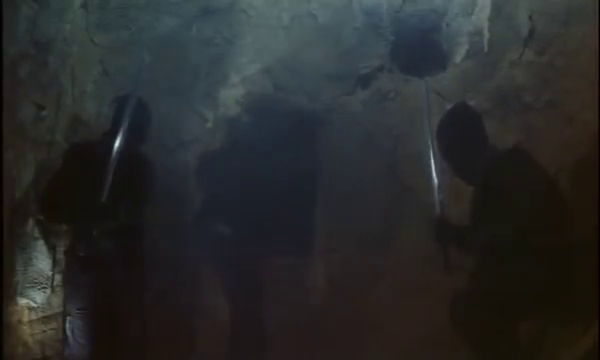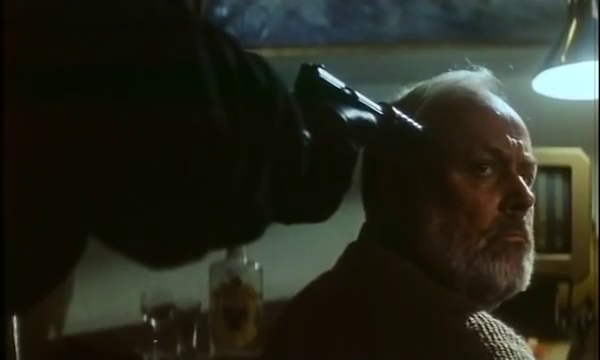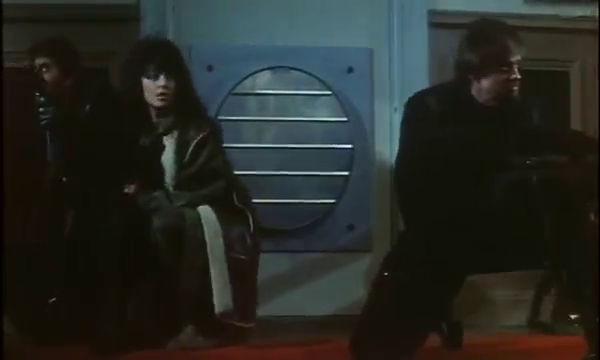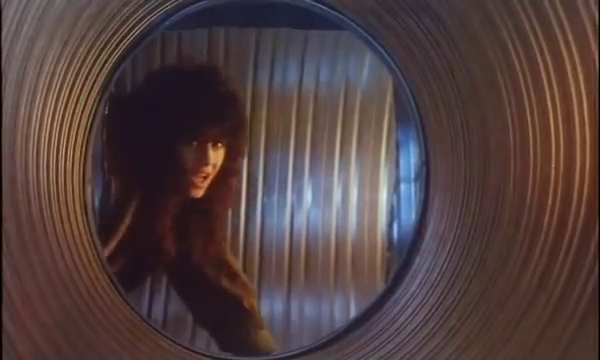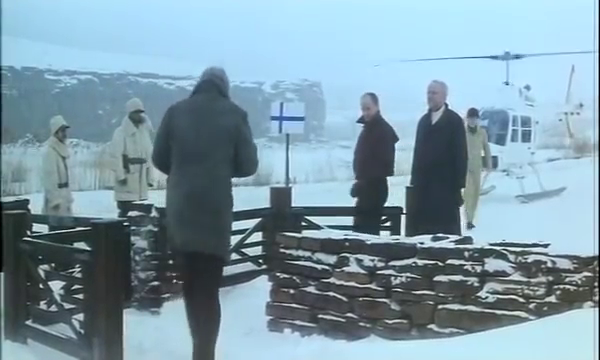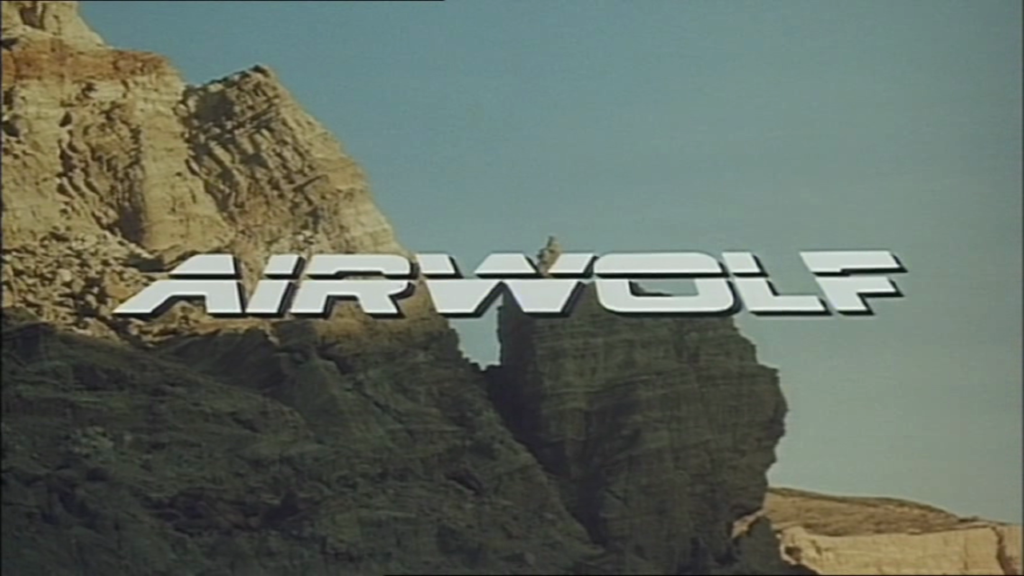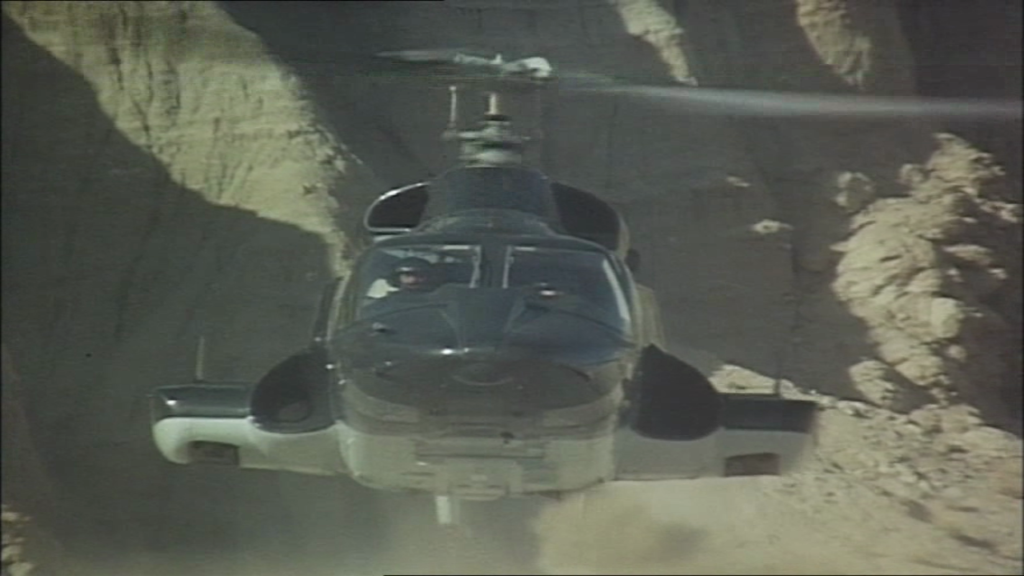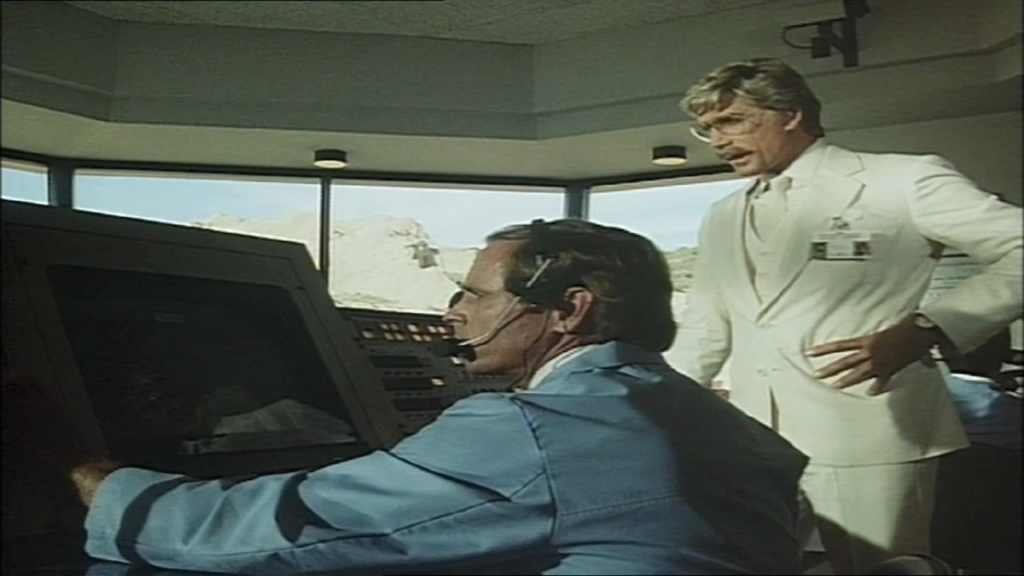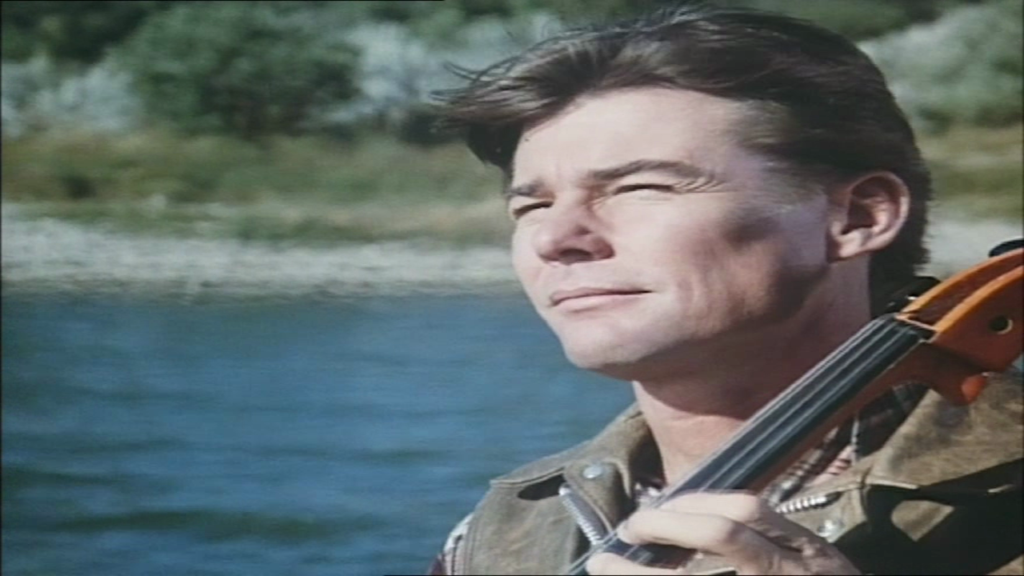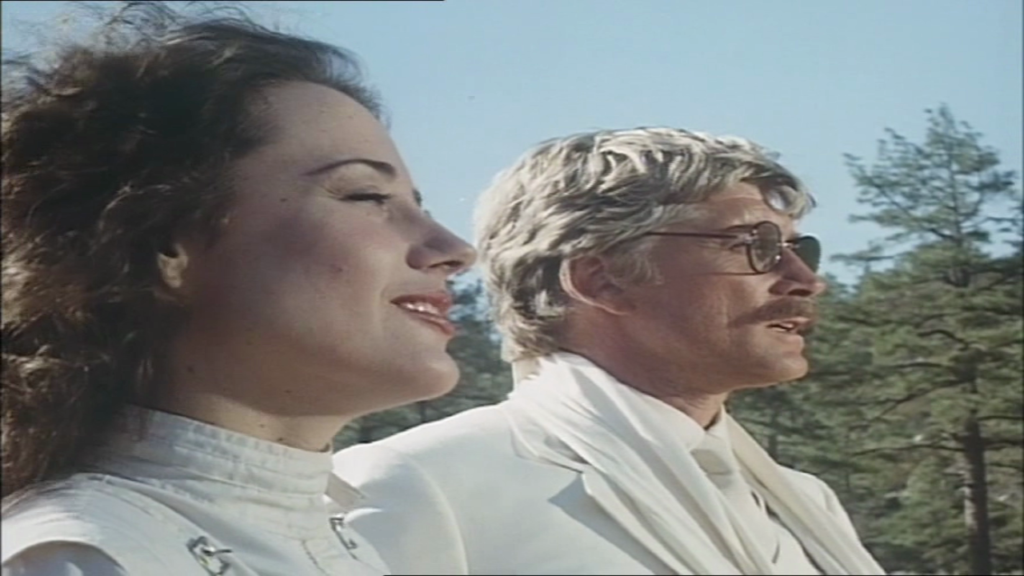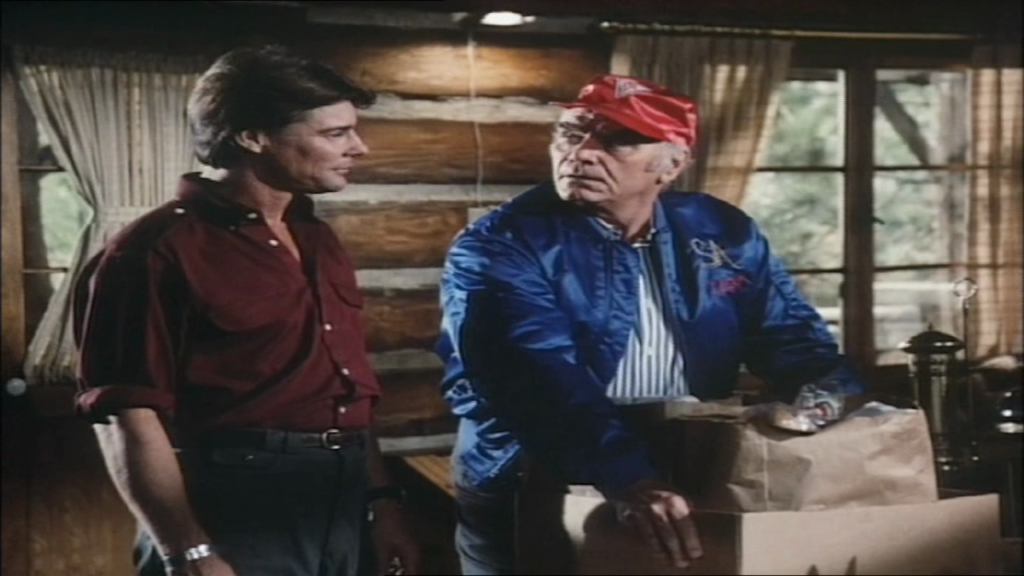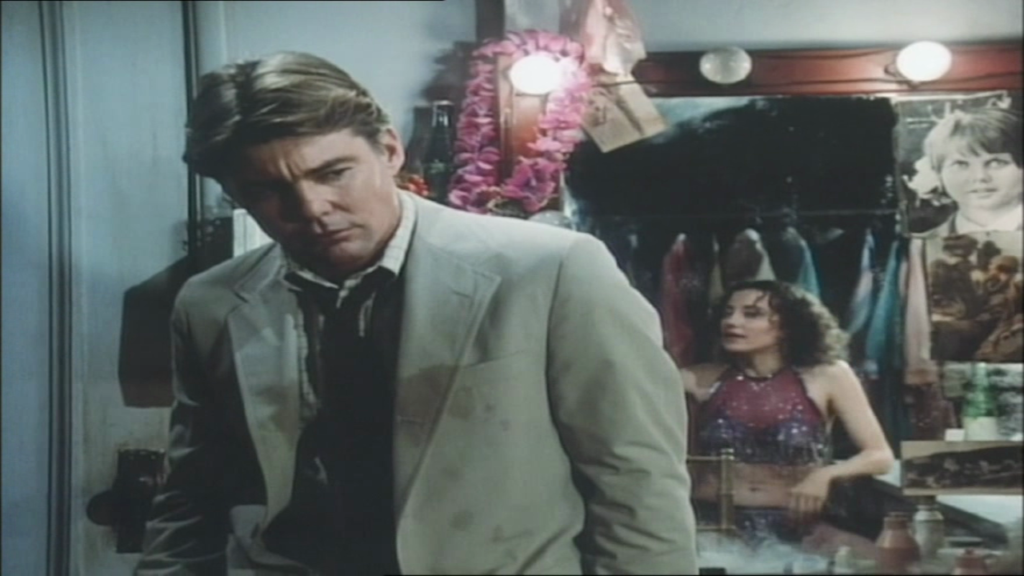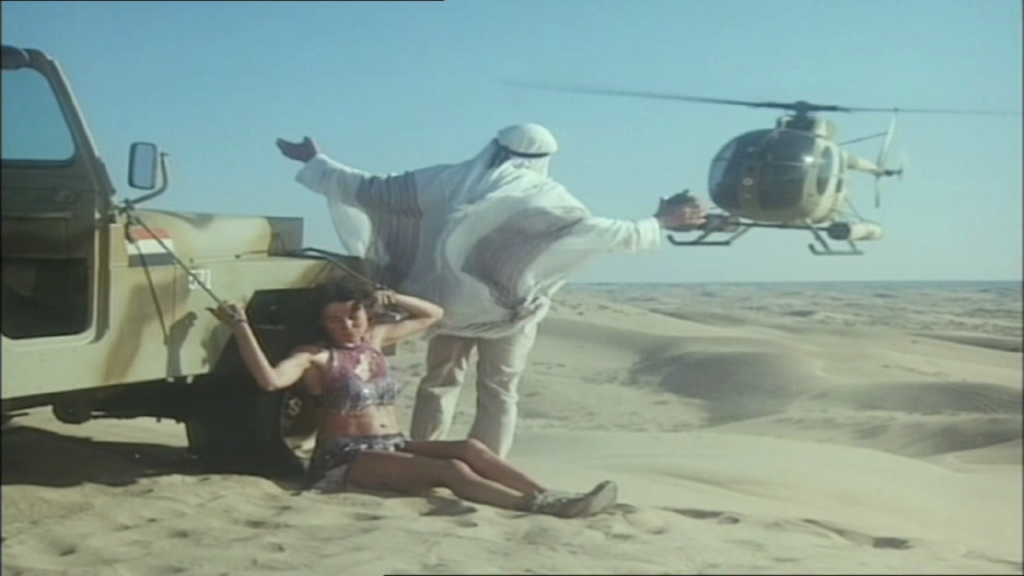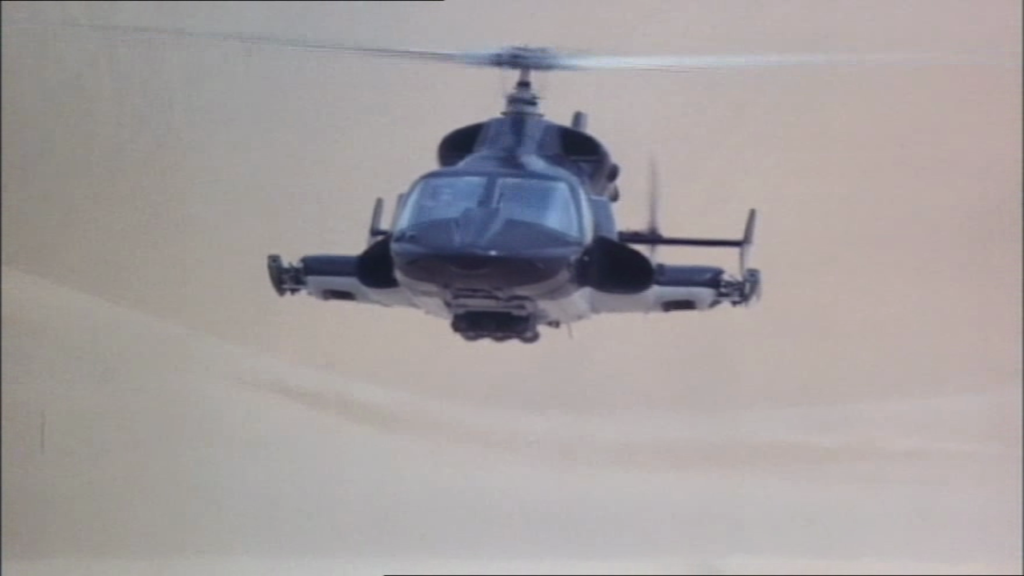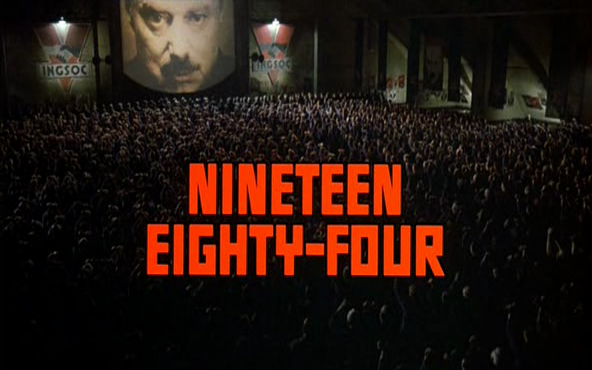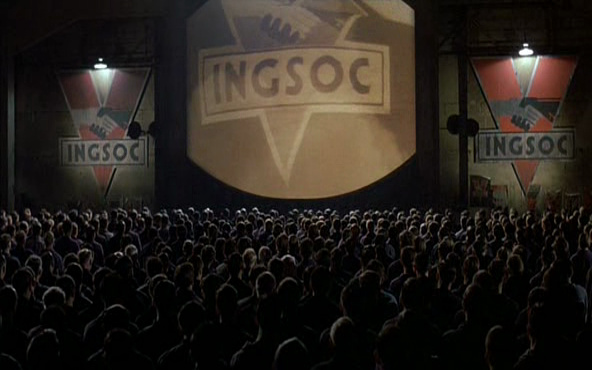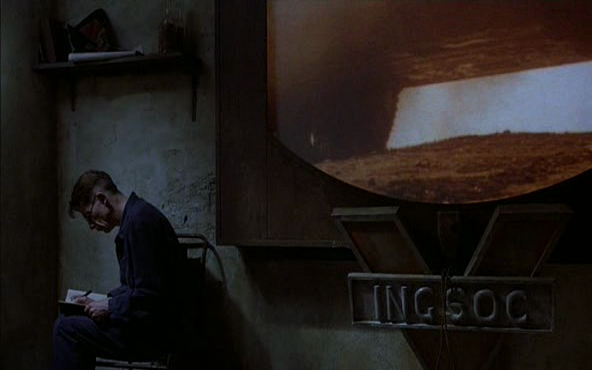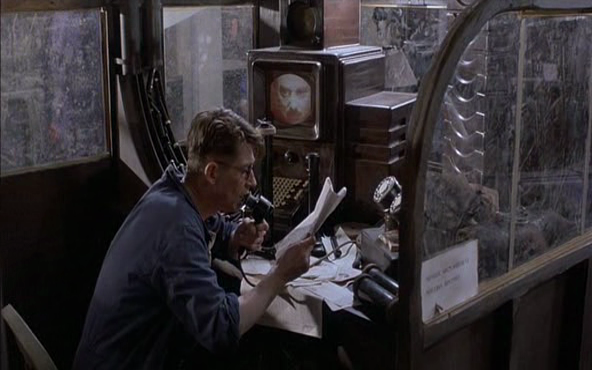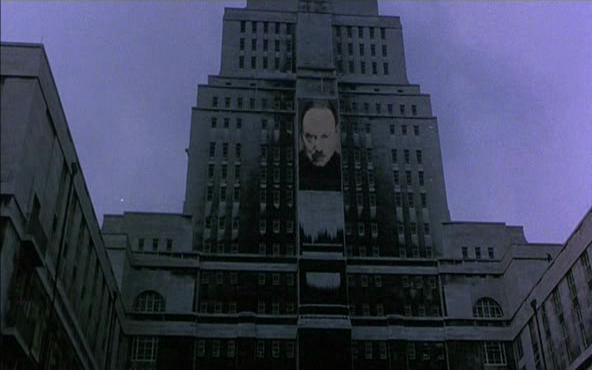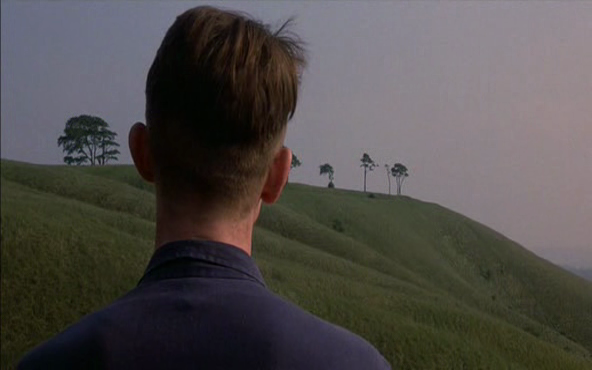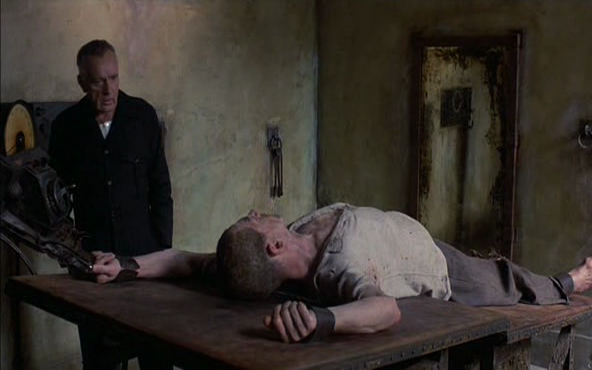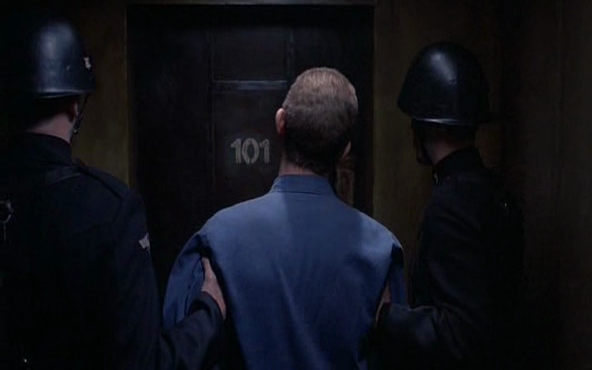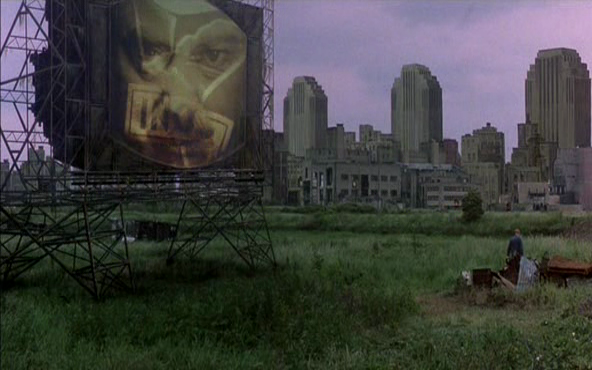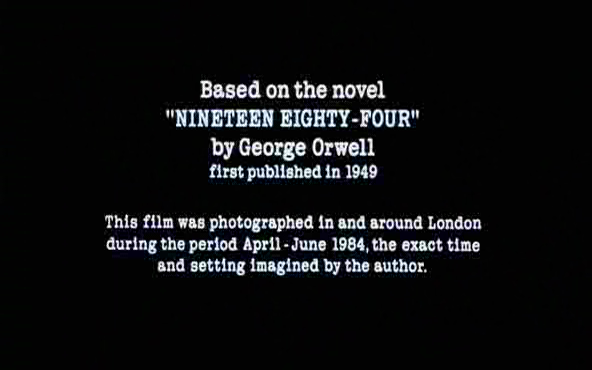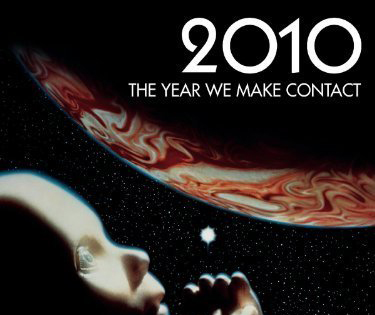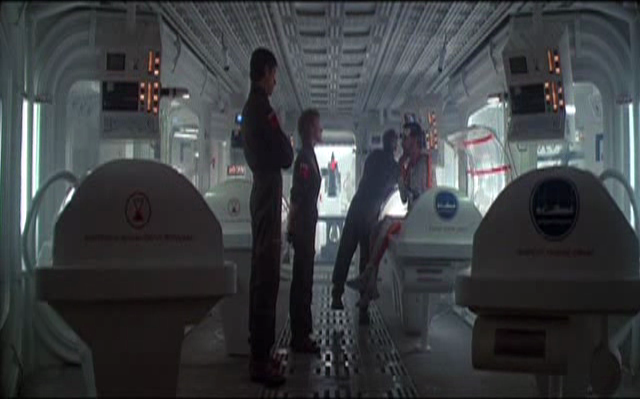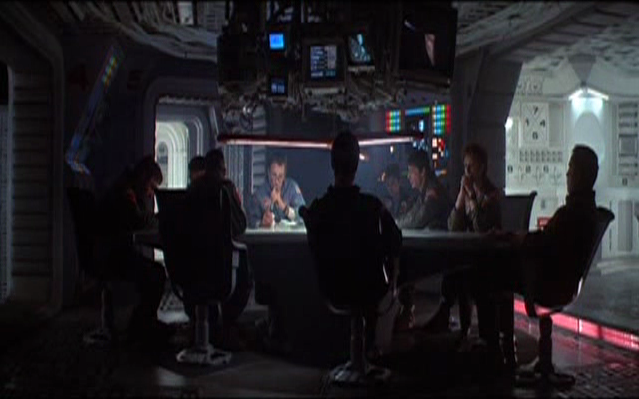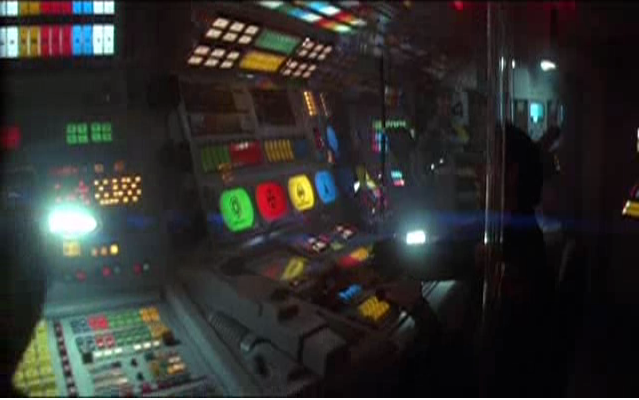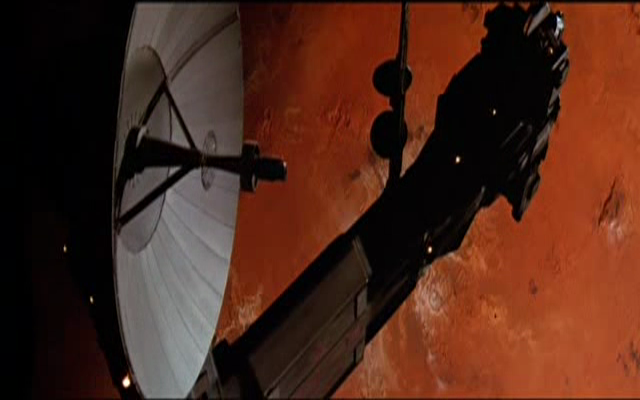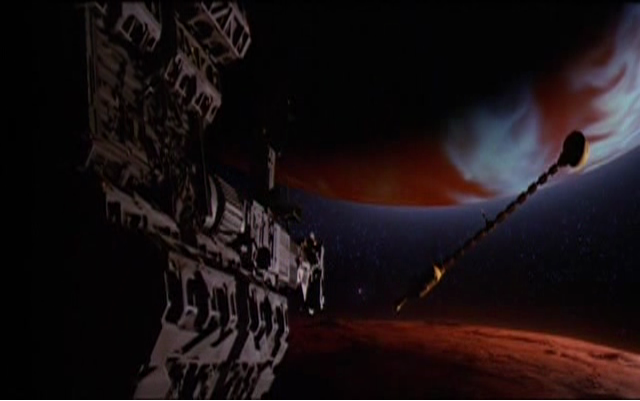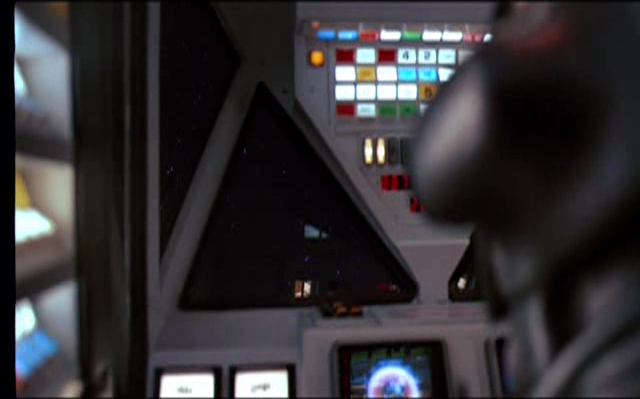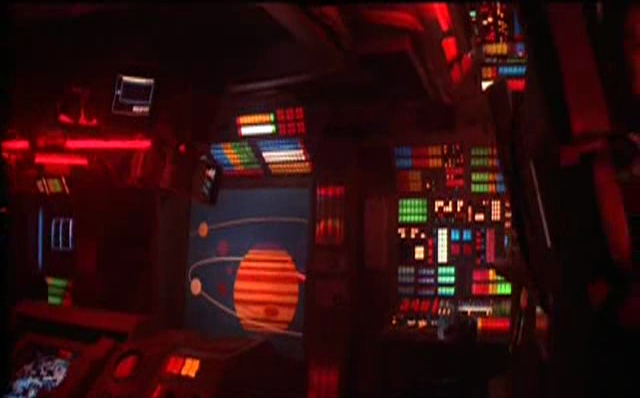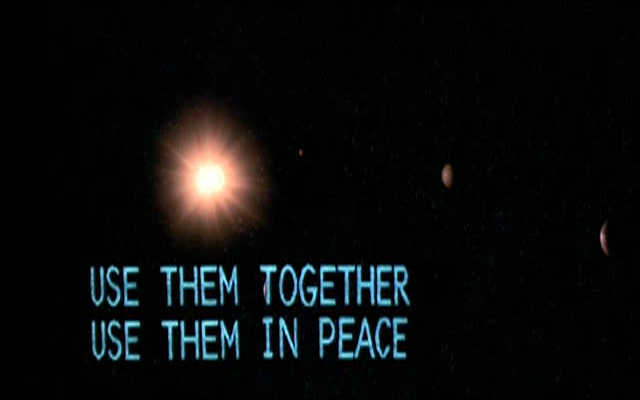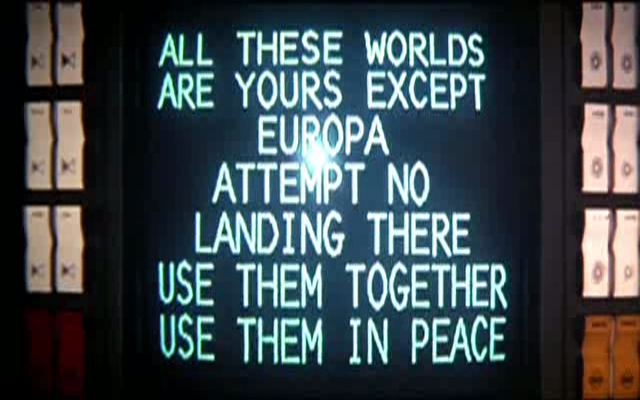-
#550 – Three Supermen at the Olympic Games (1984)
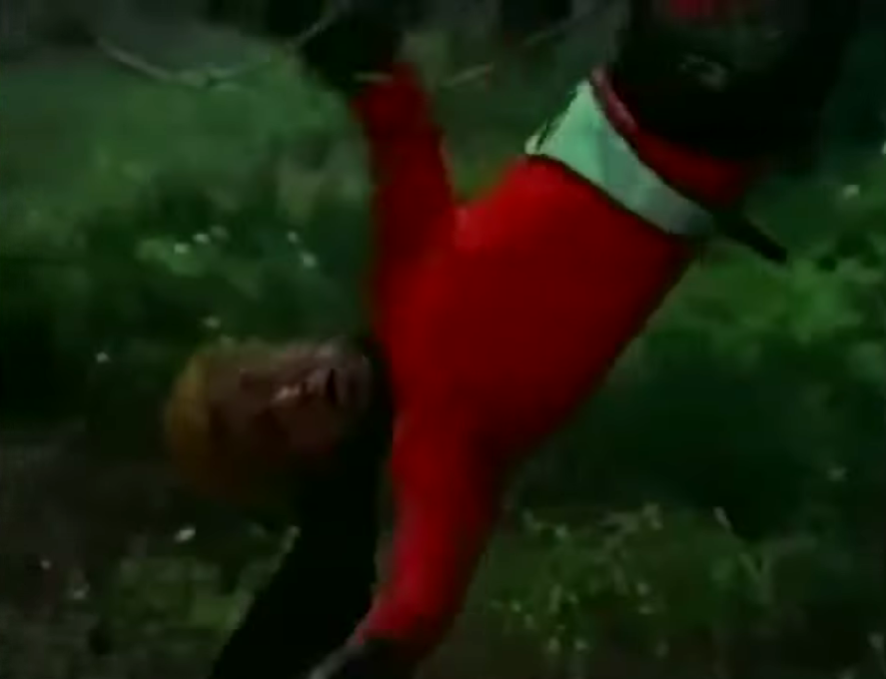
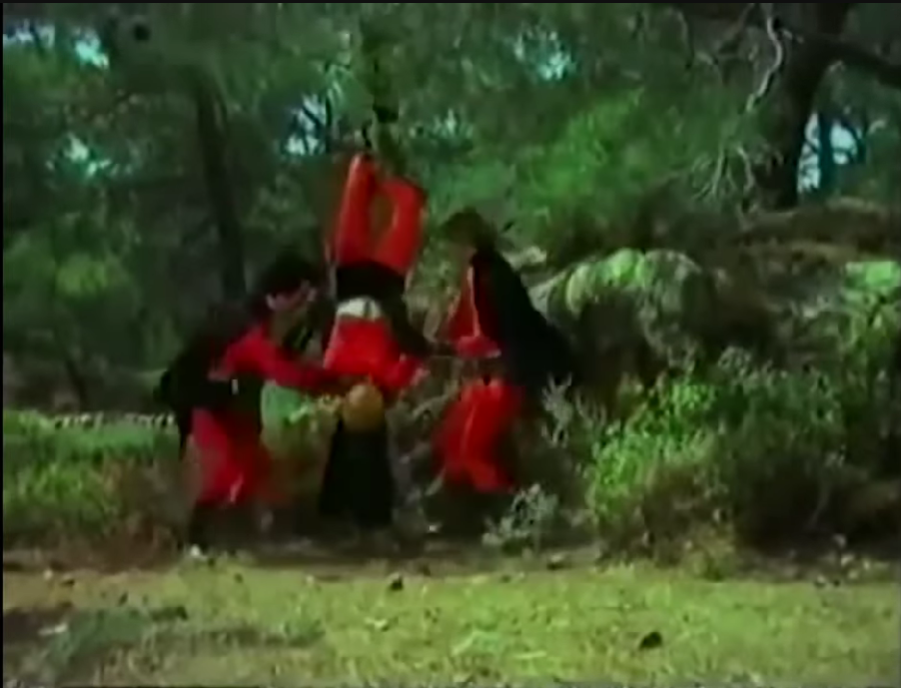
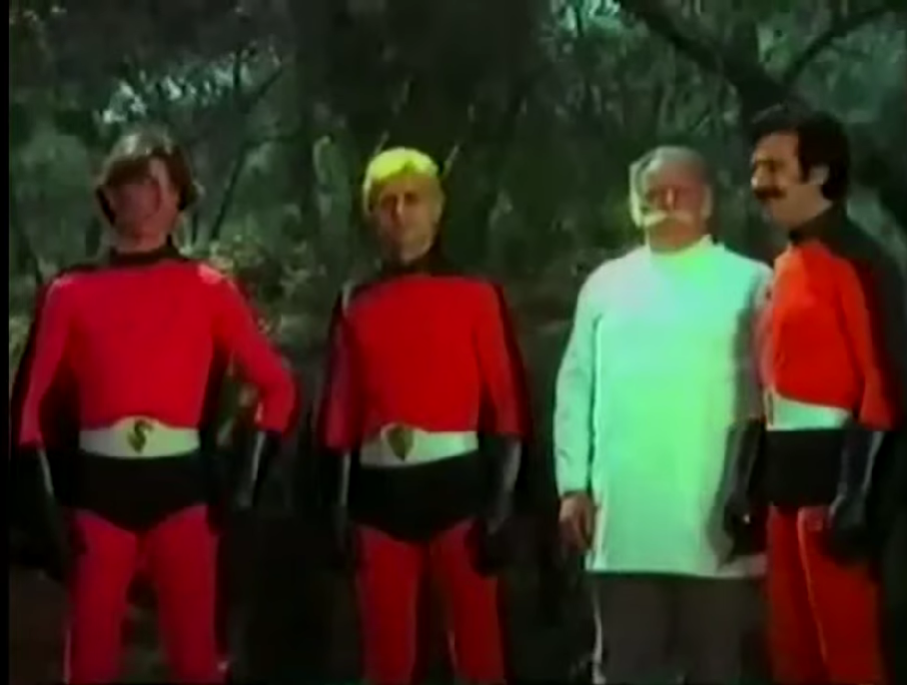
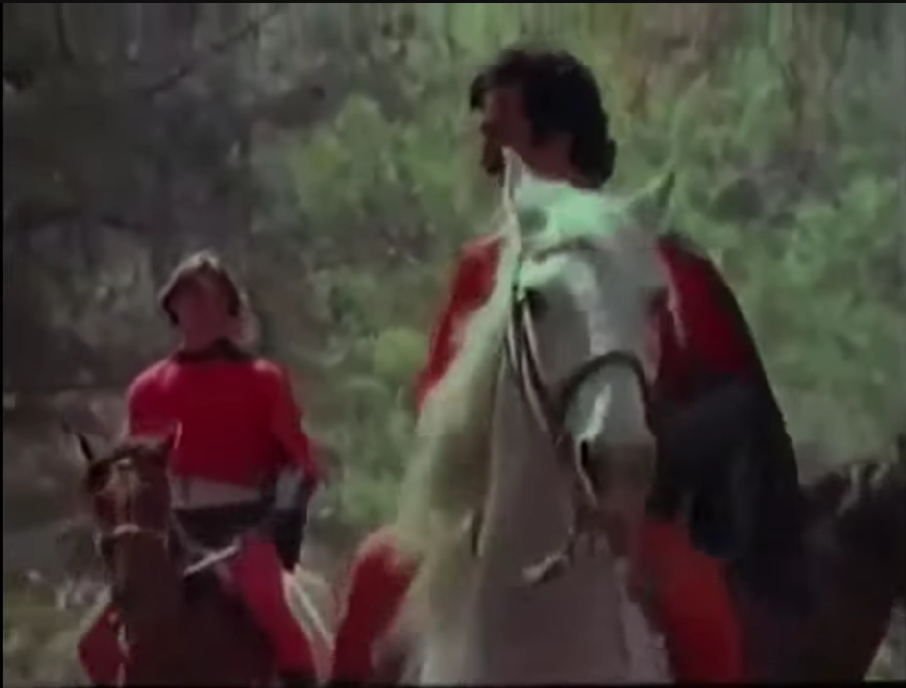
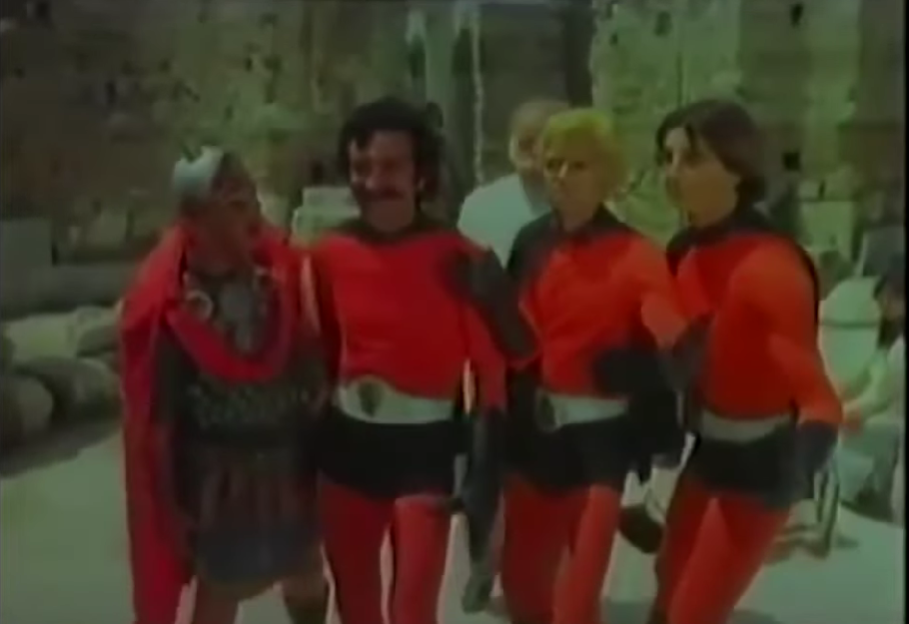
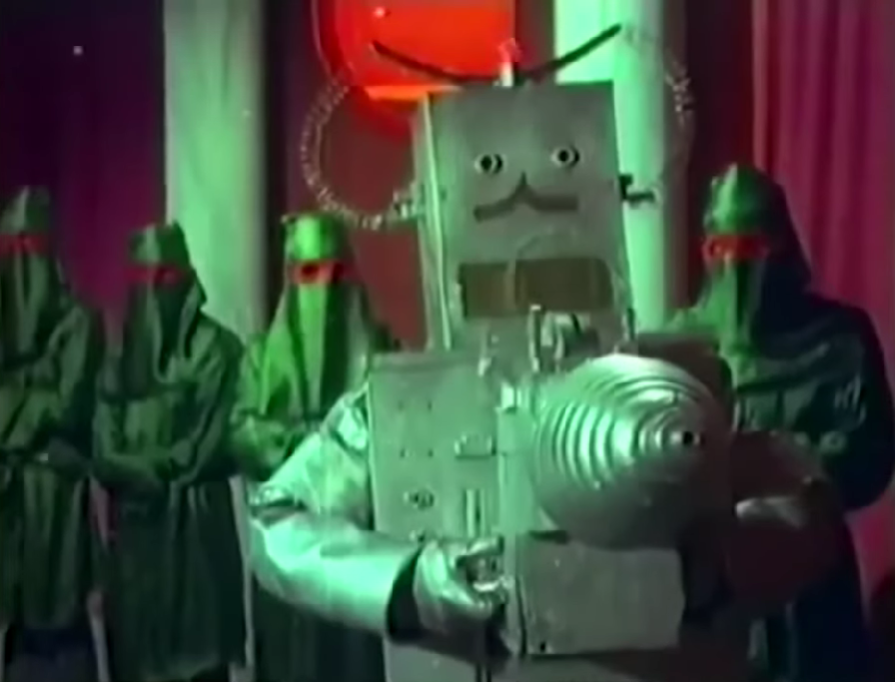
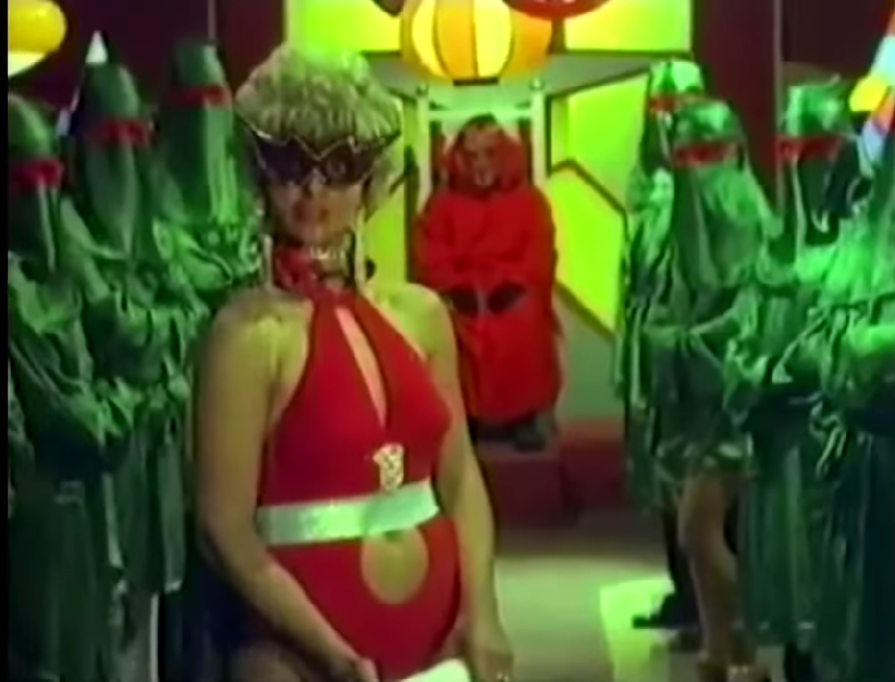
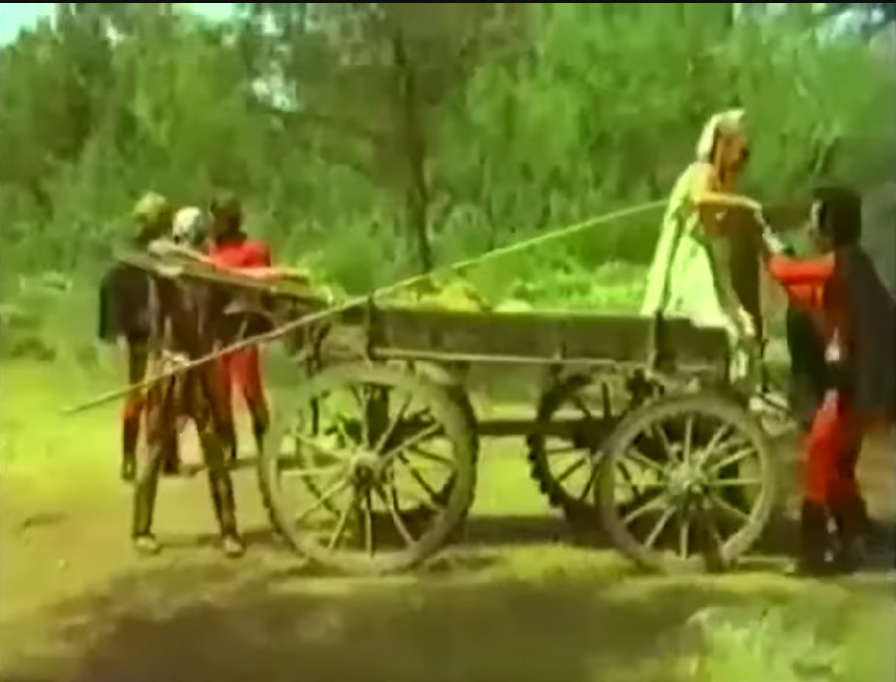
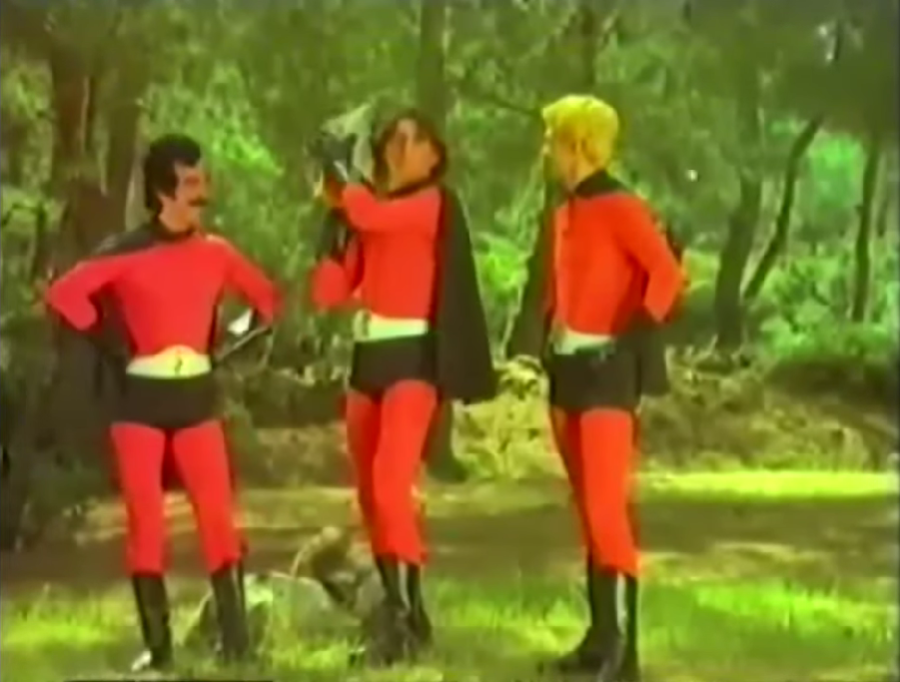
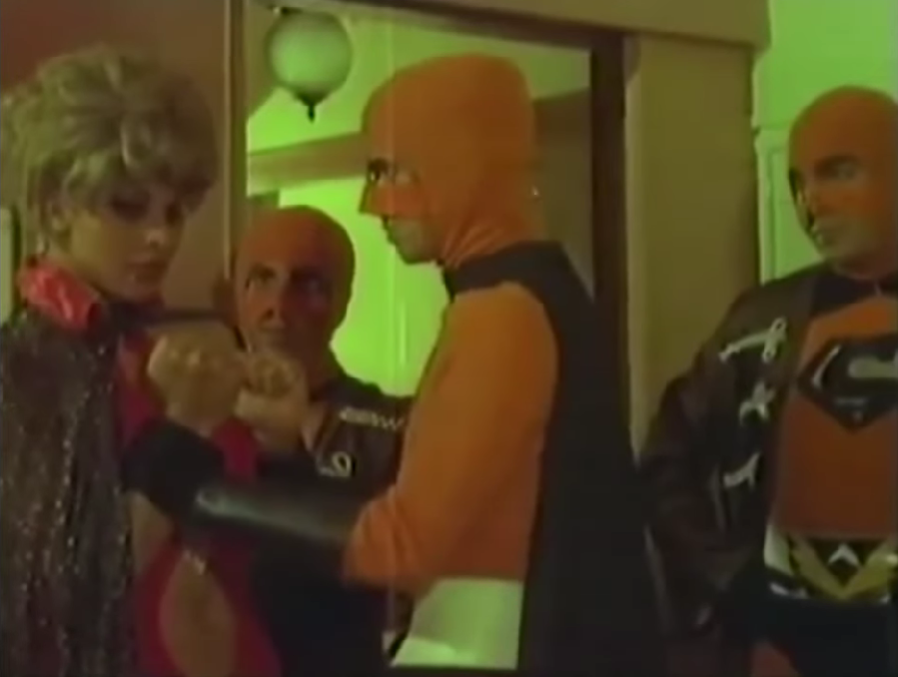
Three Supermen at the Olympic Games (1984)
Film review #549
Director: Yavuz Yalinkiliç
SYNOPSIS: The Three Supermen travel back in time to ancient Greece, where they get roped into the service of the Greek Goddess Artemis, who is fighting off some Romans of some sort.
THOUGHTS/ANALYSIS: Three Supermen at the Olympic Games is a 1984 film, and yet another film in the Three Supermen series of films. This time, The Three Supermen are sent back in time to ancient Greece, where they meet the Greek goddess Artemis, and are dragged into her service in her conflict with what I think are supposed to be ancient Romans. The story in this film is even less coherent than the others: while time travel is not an unfamiliar concept in this film series, Greek gods is certainly a new one, and I’m not really sure what the purpose of the time travel was, or the source of the conflict between the Greeks and probable-Romans. I was only able to watch the film with partial English subtitles, but I doubt a full translation would have helped: the film is a mish-mash of scenes and flaky ideas that feels like a bunch of unrelated footage stitched together. Also, the film also shoves in parts of the Three Supermen and Mad Girl film at two points; as in it just cuts in parts of that film without warning or reason. On the positive side, at least we get to see one of the worst robot designs ever on screen once again. I think the film was made to coincide with the 1984 Olympics and the hype that surrounded it, but there’s no real relation to the Olympics despite the travelling to ancient Greece. I think the Supermen throw a javelin and a shot-putt once, and there’s stock footage of horse racing at the beginning and end of the film: is that supposed to be the Olympics? I’m not sure horse racing has ever been a part it.
This film is not actually a part of the Three Supermen “canon,” with none of the usual cast or production staff returning: it’s a Turkish knock-off film, but given that the film series moved to Turkey in the previous film to appeal to a different audience, it is a bit confusing. The Supermen consist of one of them being mute, so I guess that is one bit of consistency. The supermen are not the usual international thieves his time though, and seem to be actual supermen, as at least one of them is seen flying through the air like the real superman. They also (in the Three Supermen and Mad Girl footage) have the superman logo emblazoned on their uniform. Oh, and if that isn’t enough copyright infringement, the fighting scenes are constantly accompanied by the John Williams Superman theme, which makes the fights more interesting only because that theme can make anything more interesting. A lot of the disjointed scenes are stitched together by close ups of the characters standing in front of a white background, which are clearly filmed after the other scenes, and are meant to stitch this mess together, but it is so clear what the purpose of these scenes are that they only serve to further highlight the ad-hoc constitution of this film.
Three Supermen at the Olympic Games is even more of a mess than the usual Three Superman films: the very thin main plot is surrounded by a bunch of unrelated scenes and nonsense which don’t add anything, and only serve to extend the runtime. The characters are almost completely different, and the whole thing is just a general mess without direction or ideas.
-
#483 – The Ninja Mission (1984)
The Ninja Mission (1984)
Film review #483
Director: Mats Helge Olsson
SYNOPSIS: Scientist Karl Markov is defecting to the west from the Soviet Union, and the CIA are planning to undergo the operation to extract him. However, the operation is interrupted and the Russians extract him instead under the guise of being the CIA agents. Markov is taken to what he believes is Sweden, but is instead a Soviet facility, where he is finishing the work he is undertaking. In order to undertake a new rescue mission. The CIA decides to send a team of ninjas to get Markov out, led by Agent Mason, and prevent the Soviets from completing Markov’s work and tipping the balance of power in the Cold War forever in their favour…
THOUGHTS/ANALYSIS: The Ninja Mission is a 1984 Swedish martial arts action film. Set in the depths of the Cold War, the film opens up with an operation to aid in the defection of Karl Markov to the west led by the CIA. Markov’s research will tip the balance of the Cold War into the favour of the Soviets, and so he wishes to defect to the west to maintain the current balance. However, the rescue mission is botched, and the Russians pretend to be the CIA agents and take Markov to a Russian facility to complete his work, which he believes is a UN facility in Sweden. The CIA mounts another rescue mission to get Markov out, with agent Mason leading a…team of ninjas to carry it out. The plot of the film is way more complex than it needs to be, and a lot of the runtime is devoted to explaining this overly-elaborate plot that constantly slows the film to a crawl and bloats the film with unnecessary exposition. What you really want to see in a martial arts movie is some martial arts and cool fight scenes (surprisingly), but the film just doesn’t deliver on it for the majority of the runtime. Things pick up in the last act, and boy does it overcompensate for the lack of action by making the climax utterly ridiculous with exploding henchman everywhere, but the first two acts of the film are really slow and misdirectioned such that by the time you get to the third ac, you may have already tuned out.
The characters are a typical bunch of 80’s action tropes, with the rugged action lead, the sole female character, the cold war setting, and so on. The plot concerning Markov and his estranged daughter really serves no purpose and only further complicates the film. The question that primarily arises from this film is probably why are the CIA undertaking operations using ninja operatives? As expected, there is no rhyme or reason for this, so you just have to go along with it. The martial arts stuff that we do see is fine, but there’s nowhere near enough of it.
The Ninja Mission is a low budget, low-end production; of that, there can be no doubt. The English dub of the audio is pretty bad, but that’s something you somewhat expect of martial arts films of the era, so it fits in, in a roundabout way. The car chase scenes aren’t too exciting, and there’s far too much standing around talking when there should be action on the screen. As mentioned, the film does pick up in the third act, when soldiers start being shot with syringe bullets (?) that make their heads explode, and there’s finally some martial arts on screen, but nothing that’s too special. The body count in this film is utterly ridiculous: lines of soldiers just casually get gunned down in single scenes, and its so overblown it’s quite funny. I’m not sure the film gets into the “so bad it’s good” category due to the problems mentioned with regard to the pacing which sucks a lot of entertainment value out, but some parts definitely stand out. The film has earned a “cult” status and strangely become one of the highest grossing Swedish films ever, by being redistributed across over fifty countries. Overall, it’s not a particularly memorable film, but fits into the 80s martial arts genre with its low/no budget and poor dubbing. Some parts are entertaining in a ridiculous way, and other parts are so bloated with dialogue it ruins any kind of pacing. It’s a mixed bag that be forgotten apart from maybe one or two scenes.
-
#403 – Airwolf (1984)
Airwolf (1984)
Film review #403
Director: Donald Bellisario
SYNOPSIS: A military exercise to showcase a new state-of-the-art helicopter codenamed “Airwolf” takes a disturbing turn when its designer and pilot, Dr. Moffet, goes rogue by destroying the testing facility, and taking Airwolf to Libya. The head of a CIA division named “The Firm” travels to the home of Stringfellow Hawke, a recluse who was a test pilot for Airwolf, with an offer of a million dollars to reclaim the helicopter. String is reluctant to do it, but agrees to it on the condition that The Firm find his brother St. John, who went M.I.A. during the Vietnam war seventeen years ago…
THOUGHTS/ANALYSIS: Airwolf is a 1984 TV movie, which also served as the pilot for the Airwolf TV series. In the opening scene, we see a military training exercise showing off the highly-advanced military helicopter codenamed “Airwolf” to a U.S. senator. The whole scene is really just an excuse to get some action scenes with the helicopter in right from the start, and it certainly delivers, as the helicopter flies faster than the speed of sound, outmanoeuvres missiles and just blows a lot of things up, you get the action you would expect and a good idea of what Airwolf can do right from the outset, and should get viewers hooked right away, with the technical jargon being spliced in with the action which illustrates quite clearly what they’re talking about. At the end of the exercise, the pilot Dr. Moffet, who is also the designer of Airwolf, attacks the testing facility and escapes with Airwolf along with the two co-pilots. The themes of the story are rooted in cold-war military operations and espionage, and as such has a dark tone throughout, amplified by the use of strong language and high body count that gives it much more of a serious feel than contemporary vehicle-based shows such as Knight Rider.
Archangel, The head of an intelligence agency only known as “The Firm,” visits the home of recluse Stringfellow Hawke (yes that is his real name, and yes it is the best name ever), who was a test pilot for Airwolf. Archangel attempts to recruit Hawke for a mission to steal Airwolf back from Moffet, who has joined up with Kaddafi’s forces in Libya. Hawke is reluctant to do so, but agrees to it on the condition that The Firm finds his brother St. John (does anyone in this family have a normal name?), who went missing in Vietnam on a military operation seventeen years ago, where Stringfellow made it out, but his brother did not. A lot of the film focuses on establishing Stringfellow’s character as a solitary, cultured man of few words, but who can also spring into action when necessary. His story is one of loss, not only of his brother, but also their parents who died when he was ten, and also his girlfriend in a car crash. This is played out as Archangel’s assistant Gabriela tries to get close to Hawke, but his coldness to her is a reminder that anyone who gets too close to him dies. Hawke’s character really drives a lot of the scenes, but there’s also action sequences interspersed within them as Moffet is piloting Airwolf to attack a variety of French and American forces, so it keeps giving some more action-oriented scenes to balance out the character development. Backing Hawke up is his friend Dominic Santini, who raised Stringfellow and his brother after their parents died. Dom plays a bit more of a comic relief role, but still a capable ally, and one that doesn’t upset the dark tone that the film goes for.
We don’t get to see Stringfellow in Airwolf until the finale, but as mentioned there’s plenty of action scenes with Moffet as the pilot so you can get a good sense of what Airwolf can do (also good for a TV pilot in that it shows Airwolf in a variety of situations that could be employed over the series). A real helicopter is used for the flight scenes, and the stunts and choreography are all well done, as well as the interior of Airwolf being full of flashy (for the time) gadgets and screens. Moffet himself is clearly unhinged, and though it is never explained why he has gone rogue other than implying something that happened with a project that the Senator at the beginning was involved with, Moffet’s real motivation seems to simply be boredom and enjoys taking risks and blowing people up some light entertainment. Overall, Airwolf has a good mix of action, intrigue and espionage combined with some good character development that is balanced between the different personalities of the characters. The dark tone pushes some boundaries, and gives the story a decent intensity that allows viewers to remain engaged throughout the different elements of the plot. The ending is left rather open, but as a pilot for the TV series, it is meant to be picked up there (and it is). As a stand-alone film though, it is still likeable and entertaining enough to sit through.
-
#31 – The Adventures of Buckaroo Banzai Across the 8th Dimension! (1984)
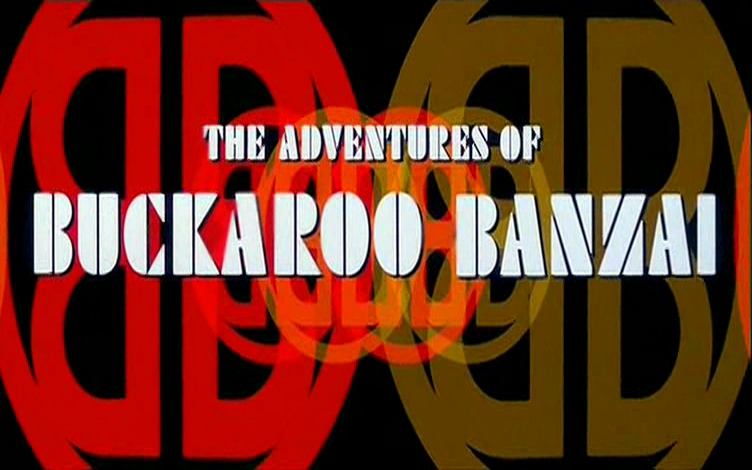
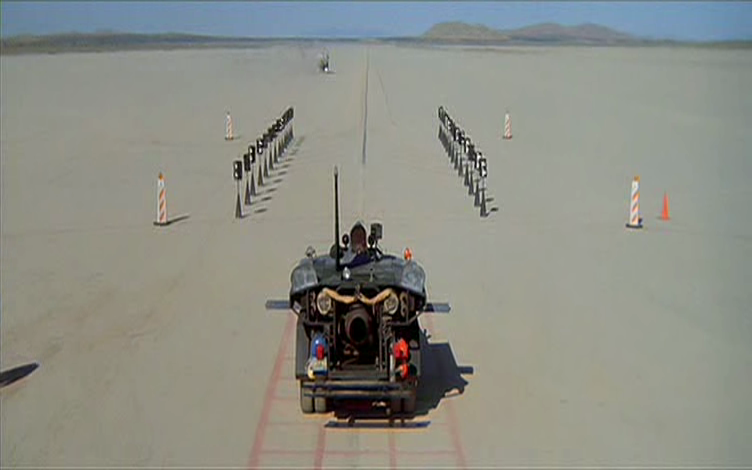
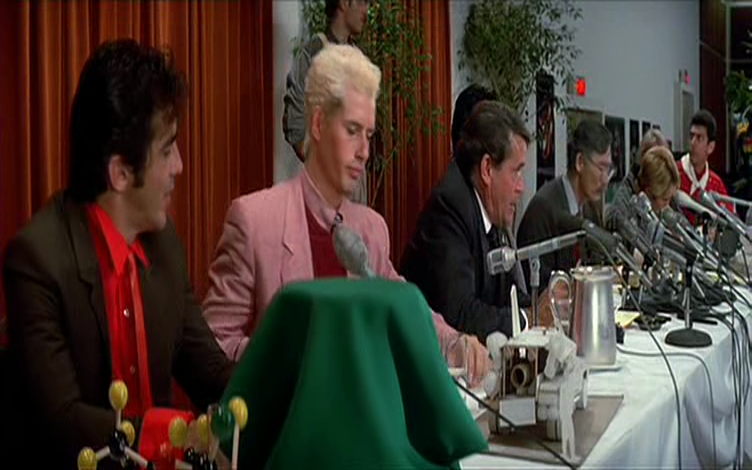
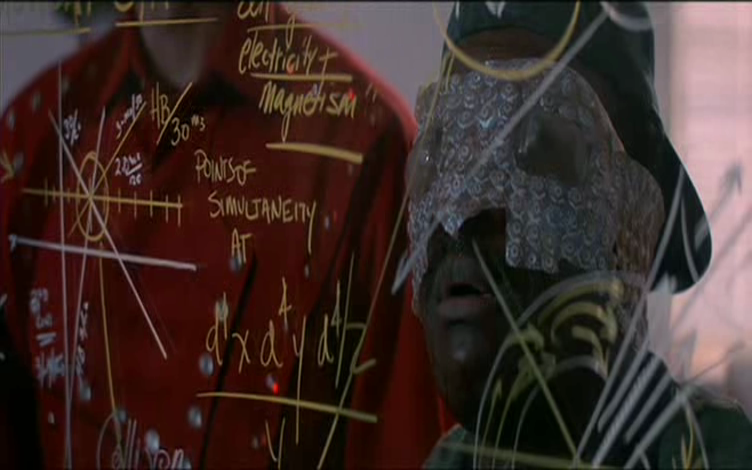
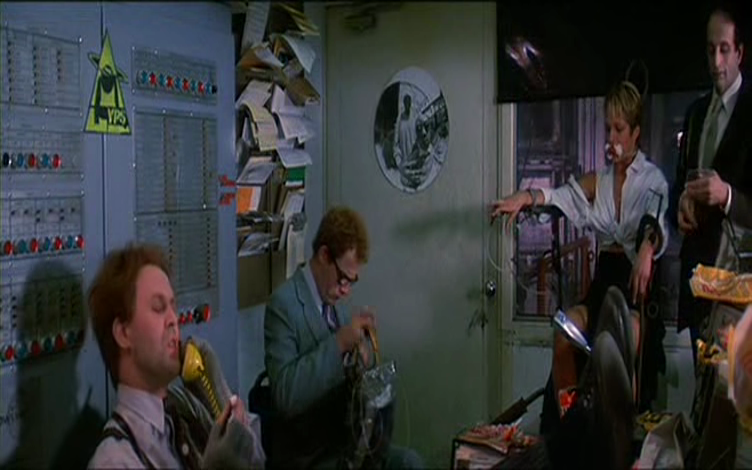
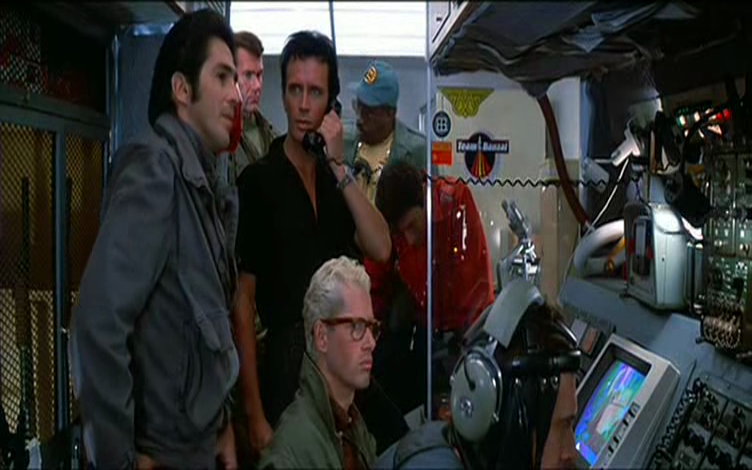
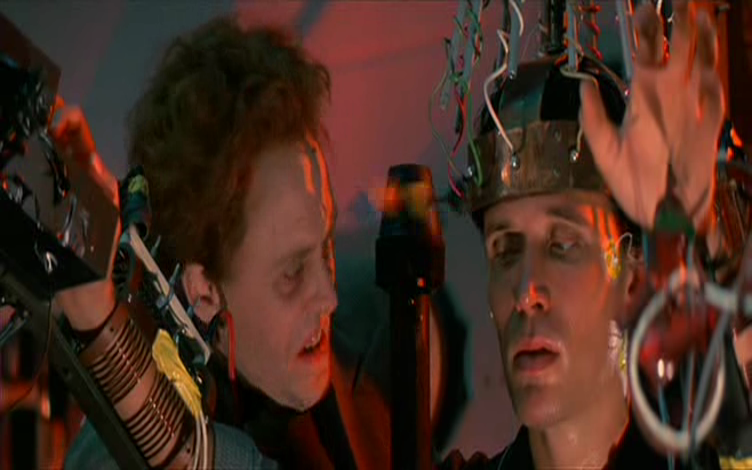
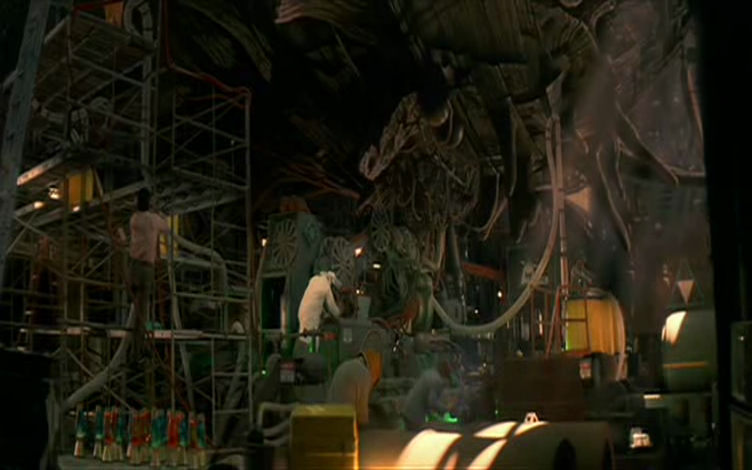
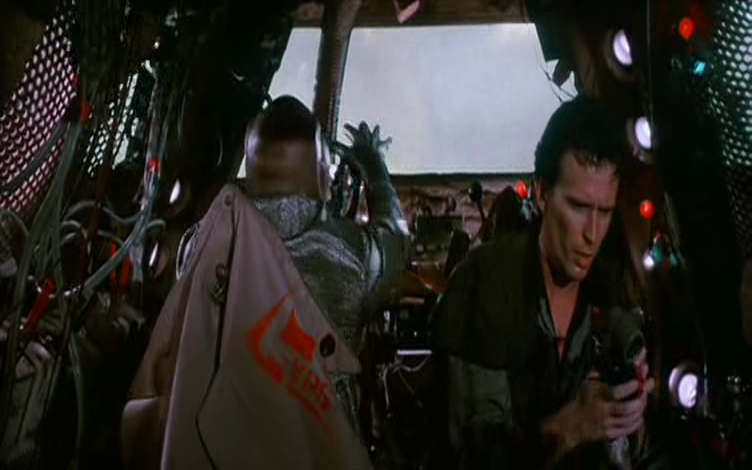
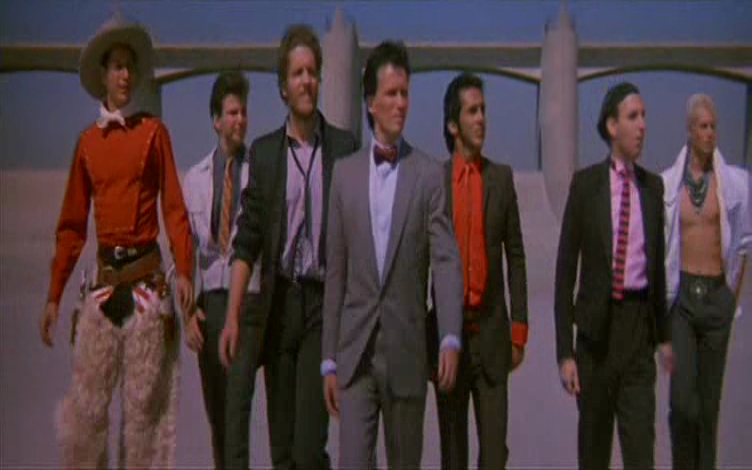
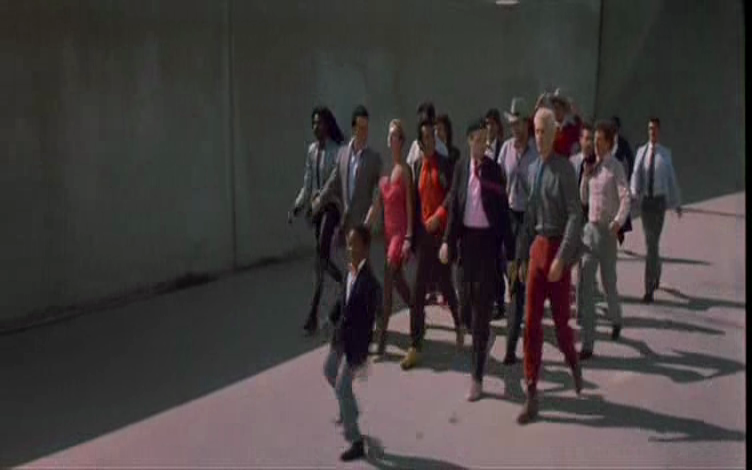
The Adventures of Buckaroo Banzai Across the 8th Dimension! (1984)
Film review #31
Director: W.D. Richter
Cult sci-fi about a modern renaissance man and his skilled team…SYNOPSIS: Out in the desert, a group of people have gathered for a test of a new jet car that could break through into the 8th dimension, however, the driver has not yet arrived. So while the final checks are being made, one of them goes to make a call…
In a hospital operating theatre, Dr. Buckaroo Banzai is operating on a patient. Using his skills as a brilliant doctor, he saves the patient, and is impressed by his assistant, and asks him if he would like to join his team. Banzai is then shown to arrive by helicopter at the test site for the jet car. The test starts and Banzai is driving the car as it breaks the sound barrier and continues. Banzai continues despite being order to abort, and he heads directly towards a mountain. Just before he crashes, he disappears into a strange void full of strange shapes and landscapes, as soon as he enters this strange dimension though, he exits out of the other side of the mountain, and so completing a successful attempt to travel into the 8th dimension. Attached to his car though, is a strange creature…
Meanwhile, Dr. Emilio Rizardo, committed in an asylum for the criminally insane is watching the report about Banzai’s achievement on TV. Banzai’s mentor, Dr. Hikita talks about the device that made it possible: The oscillation overthruster. A flashback shows how both Rizardo and Hikita managed to open a portal into the 8th dimension many years ago, and how Rizardo briefly entered the dimension and apparently went insane. Having now built his own oscillator overthruster to reenter the 8th dimension, he phones up a “John Bigbooté”, and escapes the asylum to meet up with some friends at Yoyodyne…
Back with Banzai, he and his team and band, the Hong Kong Cavaliers are doing a gig in New Jersey. Looking out into the crowd, Banzai sees a woman crying. He asks her name, and she responds as Penny Priddy. She is down on her luck, and Banzai, being the renaissance man he is, plays her a song on the piano (Mistakenly calling her Peggy). However, this fails to lift her mood, and is about to shoot herself in the head until someone knocks her and the bullet flies into the air, and she is taken away by police. The team reflect on how she looks exactly the same as his ex-wife. They then learn that Rizardo has escaped, and they have also detected a cloud-like mass over southern New England. Banzai goes to meet New Jersey, the doctor Banzai was working with in the operating theater, and introduces him to the team. Banzai and Perfect Tommy find Penny in jail and bail her to join Banzai.
At a press conference, Banzai explains his achievement in breaking through the 8th dimension, and how his parents died on the hunch that these extra dimensions house aliens and new races, and they reveal the creature they found attached to Banzai’s car. Meanwhile, an alien spaceship high in orbit above the Earth is watching, and launches a thermopod. Banzai gets a call from the president, and recieves a shock from the line, after which, he is able to see through the disguise of Lectroids, the aliens from the 8th dimension, who are trying to take over the world. They kidnap Hikita, and Banzai and the Hong Kong Cavaliers give chase.
The thermopod the aliens launched lands in some woods, and the Lectroids pick up the signal and give chase. Some hunters and cops get there first, and while one of the aliens who emerges is shot, the other escapes. Banzai radios Rawhide, one of the Hong Kong Cavaliers to return to their compound and dig up any information on Yoyodyne industries. The Lectroids find the thermopod and eliminate all the witnesses, but Banzai is close behind. The Cavaliers send out a message to the Blue Blaze Irregulars, a network of volunteers who help out Banzai when he needs it. Two of them in the area, Casper and Scooter Lindley, receive the call and head to Banzai’s aid. He rescues Hikita from the back of the van, and explains he can see the Lectroids, and he knows that they are from planet 10, by way of the 8th dimension. Banzai is rescued by Casper and Scooter, while Hikita escapes on a motorbike.
At the compound, the team are investigating Yoyodyne, and they find that all the employees have the first name “John”, and appeared at the same time that The War of the Worlds broadcast by Orson Welles that announced an alien invasion in 1938 wasn’t a hoax, but was real, and the Lectroids came to Earth on that day. Meanwhile the alien from the thermopod arrives and says he needs to see Buckaroo. calling himself John Parker, he delivers a holographic message from The Black Lectroids, a species of peaceful aliens who banished the Red Lectroids to the 8th dimension. Their leader, John Whorfin (All of the Lectroids have the first name John), now resides in Dr. Rizardo, and will try to steal the overthruster to return to the planet 10 to take revenge. Sure enough, an attack on the compound follows, and Penny is kidnapped, along with the overthruster. The Black Lectroids warn Banzai to retrieve the overthruster, or they will stage a nuclear strike against the Russians and start World War III in order to protect themselves. Rizardo contacts Banzai, telling him to come alone to Yoyodyne industries with the overthruster…
Banzai heads in in his jet car, ordering the Hong Kong Cavaliers to come in after 30 minutes to “mop up”. Banzai is captured by Rizardo/Whorfin and ordered to tell the secret of the overthruster, while the Cavaliers, backed up by the Secretary of defense move in. Banzai manages to escape and rescue Penny, then Banzai and John Parker head off to find the ship the Red Lectroids have been constructed. When Whorfin, and Bigbooté take off in it, Banzai and Parker give chase in a spare thermopod, and blow up Whorfin’s ship with him in it. The victorious Banzai then returns, into the arms of Penny…
THOUGHTS AND ANALYSIS: This is an odd film. It is (I think) primarily a science-fiction, mixing elements of satire, romance and comedy. It has a distinctive 80’s flair that is of its time; the soundtrack, the outrageous costumes and the humour all add up to create that eighties vibe. The special effects in Buckaroo Banzai were really good too; the costumes of the Lectroids are very well done, and though most of the sets aren’t very elaborate in terms of science-fiction, they are still well put together. The jet car and the alien ships have sort of messy aesthetic to them, unlike the more sterile sets one might usually see in science-fiction.
There are a lot of interesting ideas in this movie. The world created in this movie seems very rich and interesting, introducing a rage of interesting characters in Buckaroo Banzai and his Hong Kong Cavaliers. However, I think that the film just isn’t long enough to realise all these interesting ideas in just 102 minutes. This is no more prevalent than in the protagonist of the film: Buckaroo Banzai, a regular renaissance man; who is a surgeon, rocket car driver, rock star and physicist. The film spreads out Banzai across all these areas, in which he handles all with ease. The characters of the Hong Kong Cavaliers, such as Rawhide and Perfect Tommy seem to be really interesting characters, but are never fleshed out during the film. As I said, a rich world has been created, but it is never really elaborated upon. I suppose one should just enjoy the ride that the film offers, rather than trying to overthink what is happening in what is mainly a comedy film. A sequel was planned, which was mentioned at the end of the film, but it was sadly never realised.
With regards to the reception of the film, it failed at the box office, making only half it’s budget back. Its failure in this respect could be due to a number of reasons. As I mentioned earlier, the movie creates an interesting backstory, but there just isn’t enough time to elaborate on it, making the movie a little confusing. The deadpan humour of Buckaroo Banzai also may not be to everyone’s tastes too, I imagine if you went in to see a comedy film as this was advertised, you might not “get” the humour on offer. It’s lack of success can also be attributed to the fact that it was never really advertised to a mainstream audience, instead promotions and advertisements were done at various science-fiction conventions, appealing to that core audience which it would enjoy it, rather than the public in general. Despite it’s shortcomings in the cinema, it has become a cult movie, gaining a small but dedicated fanbase, and a number of spinoffs in the form of novels and comics have been released since the movie, which shows the movie still has that appeal to a circle of people. I think the film can capture one’s imagination quite well with the possibilities of this renaissance man and his band of merry men.
In short, I think Buckaroo Banzai is a fun film; the characters are interesting, the production is slick, and the special effects are well done. It is pretty much a science-fiction film for science-fiction fans though, and other people may not enjoy the humour or the story that the film has to offer. Appealing to the science-fiction core seems like a double-edged sword really: They will get the humour, the characters, and perhaps the confusing plot, but science-fiction is a genre that hinges on it’s audience paying special attention to the details, and since this movie skips over some of the finer details, it can seem a little confusing, even to the core sci-fi fan. But again perhaps this leaves a lot of space for an imaginative mind to fill in the gaps and have lots of fun with the world that is established in the movie. Regardless, it is a fun movie, and if sci-fi is your thing, this should be your thing too.
And remember: “No matter where you go…There you are.”
-
#17 – Nineteen Eighty-Four (1984)
Nineteen Eighty-Four (1984)
Film review #17
Director: Michael Radford
A 1984 movie adaption of the famous George Orwell novel 1984 where The Party is everything and all powerful.
In a dystopian 1984, Winston Smith lives in a squalid existence in the ruined state of Oceania. His job is at the Ministry of Truth is to re-write history in accordance with the current political situation. He is haunted by memories of his childhood when his Mother and Sister disappeared. He also keeps a journal of his private thoughts, which is a thoughtcrime, breaking the law of no independent thought.
One day, Winston meets a woman named Julia, and begins an affair with her. (It is against the law for people to fall in love), they live a secret life in an illegal apartment, and drink and eat various forbidden foods such as real coffee and real bread, whereas the workers usually get standard rations to live on, which helps support the parties war effort.
The couple’s (somewhat) blissful existence comes to an end when the two are arrested by the Thought Police. It turns out that the man from whom they were renting the room from is a member of the ruling party. After a lengthy interrogation, Winston learns the truth: That the enemy of the state; Emmanuel Goldstein, does not exist and was invented by the party (The same is seemingly held true for Big Brother). His interrogation continues into Room 101, where he is confronted by his worst fear: Rats. Upon betraying Julia, insisting they inflict the pain on her, is deemed cured, and fit to be released.
In the final scene, Winston is sitting in the Chestnut Tree Café, where he had seen previously rehabilitated criminals. He meets Julia, who informs him of how she betrayed him. Clearly having lost any affection for each other, she leaves, and Winston is left with the glaring image of Big Brother in the café…
There have been a number of adaptations of 1984, into TV series, movies and radio dramas. This particular movie is of particular interest because it was produced in 1984, the year the novel was set. Obviously, when the novel was written in the late 40’s it was a look at the future, but when the movie was made, it was present day…yet it isn’t, because the 1984 it was produced in wasn’t much like the version in the movie. This brings up an interesting comparison between the one imagined by Orwell in 1949, and the actual one. It was however, shot in and around London, where the novel takes place, in the same year and months that the novel takes place.
We perhaps can be thankful that 1984 did not turn out the way that Orwell imagined, which is depicted as a run-down city with no maintenance, and the population live in squaller. Writing after the end of World War II, after the bombing and destruction of Britain’s cities, it was probably difficult to imagine a future rising from the ashes of the war. Another interesting footnote in the development of the movie is that Orwell’s widow, Sonia Brownell only gave permission for the film to be adapted shortly before her death, under the condition that no “futuristic special effects” were used in making the film. This decision perhaps adds to the relevancy of the film, making as “present day” as possible, while still keeping the real and imagined apart.
There is a sense of psychological terror in 1984 that is used to address society that isn’t really seen quite as strongly in other science-fiction works, though it still fits in with the British views of science-fiction. The film takes the concepts of invasion and governmental control to the last bastion of humanity: The inner-most thoughts of the mind. it is a dark and terrifying prospect that is raised, that people will yield control of their lives to the government under the blanket of fear of war and invasion.
Overall, it is a positively received adaption of the book, in comparison to the 1956 US movie (Which gave the story a happier ending, but hasn’t been released since). The franchise has become a mainstay of science-fiction and British culture, with concepts such as “Big Brother”, “newspeak” and “thought police” being popularised by the novel. It also has influenced other films, such as Brazil in 1985, which deals with very similar themes but with a more black humour, or V for Vendetta. So, if you enjoyed 1984 the novel, this adaptation shouldn’t disappoint.
-
#3 – 2010: The Year we Make Contact
2010: The Year We Make Contact (1984)
Film review #3
Dir. Peter Hyams
The sequel to the classic 2001: A Space Odyssey. If you’re looking for more of the same artistic flare, you may be suprised.
2001 and 2010 are a bit like chalk and cheese, but both of them are equally enjoyable, just probably in different ways. While 2001 has a very artistic direction and production, touching on the notions of the sublime and the numinous with it’s ambitious set design and large budget, 2010 is a more traditional cinematic venture with more a more traditional script and soundtrack.
2010 elaborates more on the concepts introduced in 2001, one of the most fundamental parts of the story is the continuation of the Cold War between the United States and Russia, which was mentioned briefly (one line?) in the original movie becomes one of the main aspects of the story, with the U.S. and Russia on the verge of all out war. Being produced in 1984, when the Cold War was still ongoing, there was an obvious prediction that it would continue into 2001 and 2010 as depicted in their respective movies (Though the novels they were based on were published much earlier).
The sets in 2010 are much darker and murkier than the 2001 designs. Maybe this is due to the ship being mainly set on board a Soviet ship The Alexei Leonov). The controls and monitors of the ship are adorned with Russian letters and characters. When the film switches to the shots of the Discovery (The U.S. Ship) the white, sterile environments could not be any more different. The re-creation of the ship from 2001 is very accurate, though only a few sets of the original ship was recreated probably due to budget constraints.
The Discovery still looks more advanced than the Alexei Leonov, possibly because the Soviet ship is full of a lot of standard sci-fi set aesthetics, such as flashing buttons, and monitors with 80s computer graphics, which show their age when watched now (It’s pretty hard to be convinced that this ship could make it to Jupiter…), though the Discovery has aged much better, as it still looks futuristic and advanced, possibly because 2001 was produced to be as scientifically accurate as possible, whereas 2010 seems to take a few “scientific liberties” to up the action-drama element of the film.
I like that 2010 doesn’t answer all the questions 2001 raises, and where it does, it seems to answer them with more questions, for example, 2001 did not show any aliens on-screen on the advice of Carl Sagan, who famously said that aliens would look so different to us, that trying to create that one screen could never do the truth justice. In the end. HAL becomes a hero of sorts, David Bowman from the original appears, but his appearance seems to suggest he has become a higher life-form of sorts, and the monoliths, shown in the first movie to be somehow responsible for advances in the evolution of man, now makes another impact on the evolution of man, stopping the Cold War and heralding a new era for the Earth. Never explaining what the monoliths are, just what they are capable of. As well as this, new life is just beginning on Jupiter’s moon Europa, who may one day join with humanity the way the east and west have now joined together on Earth.
So overall, another interesting and enjoyable movie. Completely different genre to it’s predecessor, but still tells the story it begins well, and taking on the issues that were at the forefront of the agenda when it was produced. It does not try to emulate 2001’s groundbreaking style (Which would be a folly as far as I’m concerned), but tells it’s own story and leaves a poignant message about the mysteries of our universe.
Finally, should the title of the film be changed to The Year We Made Contact, now 2010 is in the past? Or should it still be make since making contact with aliens is still something we have yet to do? Hmm…
